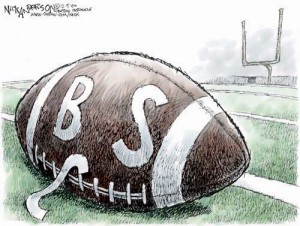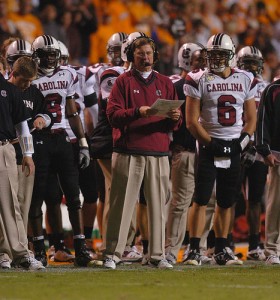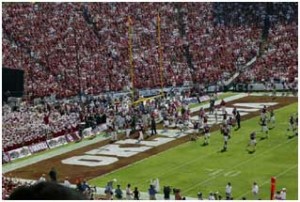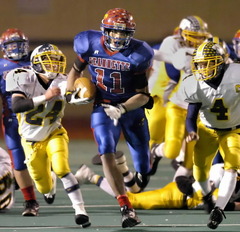There is a constantly raging debate in college football about haves/have nots. Central to this discussion is the plight of previous national powers fallen trying to rejoin the elite and programs with maybe one or two brief past glory periods trying to do the same.
As to the former, you have programs such as Nebraska, Notre Dame, Florida State and Miami-FL. It has been claimed that Nebraska stands little of being mentioned in the same breath as USC again because players have greater choice and why should any one now need to go to Lincoln, NE. Such a position neglects the resurgence of a program that fell on hard times in the 1990s – the Oklahoma Sooners. Why on earth would anyone want to go to Norman, OK?!
In Notre Dame’s case, academics and recruits’ ignorance of ND’s past cachet has been their undoing. However, ND’s academics have always been stringent. For FSU & Miami-FL, the ever-increasing attention placed on recruiting Florida has certainly hurt these programs’ talent bases. Recruits no longer need to sit as the 3rd string WR at UM when you can be a star (and get TV exposure) at Rutgers or South Florida. However, the rise of South Florida itself and continued excellence at the University of Florida is testament to the depth of the Sunshine State.
In the second case, you have lesser programs such as Clemson, Ole Miss and unfortunately, my alma mater, Pitt. These are programs that experienced meteoric success in short periods in the past. They have never been consistent national title contenders decade after decade like UMich, Ohio State & USC. Yet fans of these schools still look on their teams as still being one snap short, one player short of returning to the glory years. They go from coach to coach, AD to AD, in search of that elusive peak.
In order to divine whether these two types of programs indeed have a lessened or non-existence shot at resurging, we must look more closely at the Have’s in college football. Actually, we should say the Current-Have’s. OU is once again a national power while Nebraska flounders. USC is a contender while Notre Dame languishes. Virginia Tech wins while Pitt languishes. Rutgers rise from (beyond) the ashes while Syracuse bottoms out.
My contention is that coaching is the biggest factor. Programs such as Clemson, Ole Miss, Pitt, Michigan State, Nebraska, Notre Dame all have the support of their Administrations. They have great or improving facilities. They all have some sort of tradition and a past of winning and producing great pro players. But they don’t or may not have the right coaching anymore.
Look at USC post-John Robinson/pre-Pete Carroll, OU after Switzer but before Stoops, Notre Dame since Lou Holtz’s departure. Consider Nebraska after Tom Osbourne, Florida State without Bowden’s great offensive coordinators. Now look at USC with Pete Carroll, OU with Stoops, LSU since Nick Saban and now with Les Miles.
It is not a chicken or egg issue. Great coaches can turn around a badly-constructed institution. A bad coach cannot turn win at a well-built administration. Certainly a bad coach can humble a great program. If that was not the case, Paul Hackett would still be at USC, Bob Davie would be winning titles at Notre Dame and Bill Callahan would not have one foot in the grave at Nebraska.
Because they exert greater control over their players and programs, college coaches have much more of an impact than professional coaches. Nick Saban awakened LSU; Greg Schiano is doing the near-impossible at Rutgers; Frank Beamer has built a colossus at his alma mater, Virginia Tech. Soon – Butch Davis at UNC, Dennis Erickson at Arizona State. H*ll, Steve Spurrier won at Duke two decades ago. South Carolina is/will be a picnic compared to Durham. And for my sake, let us hope – Dave Wannstedt at Pitt… or maybe the next guy.

![By The Owl [Public domain or Public domain], via Wikimedia Commons Pitt vs Pennstate at Pitt stadium, 1958](http://www.jollybengali.net/theconfluence/wp-content/uploads/2013/08/1958PittvsPSU_PittStadium.jpg)







